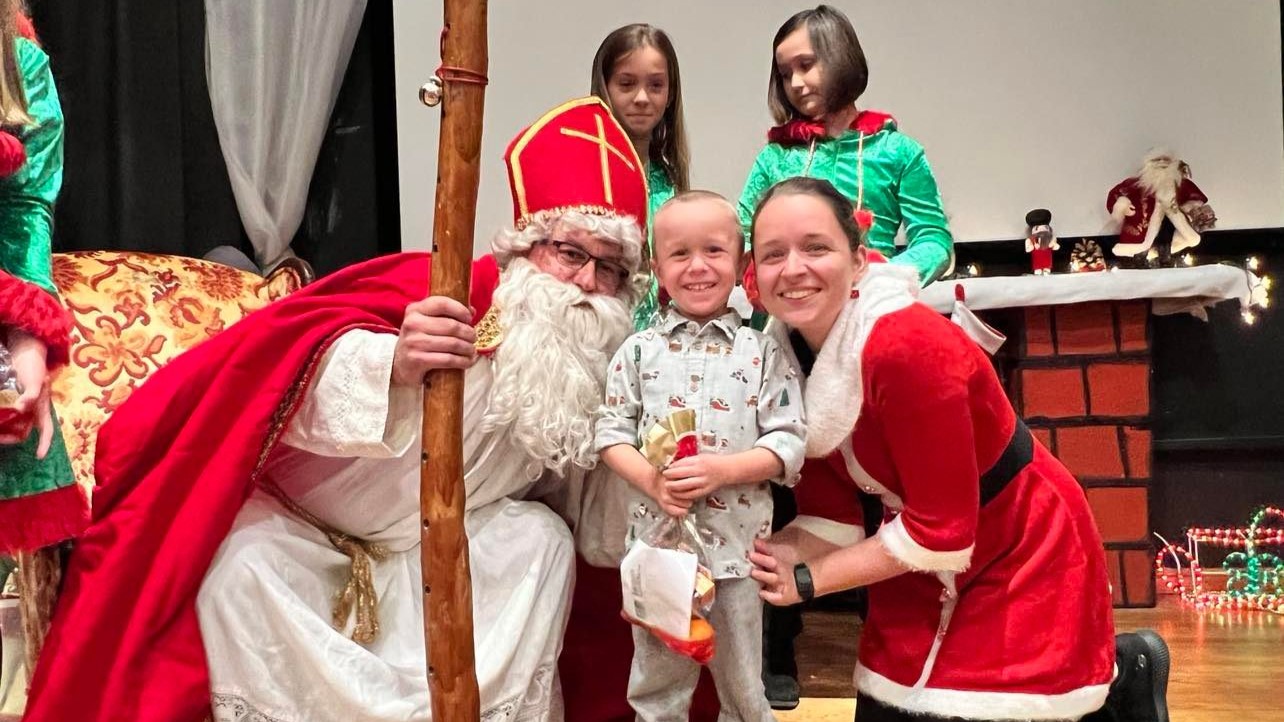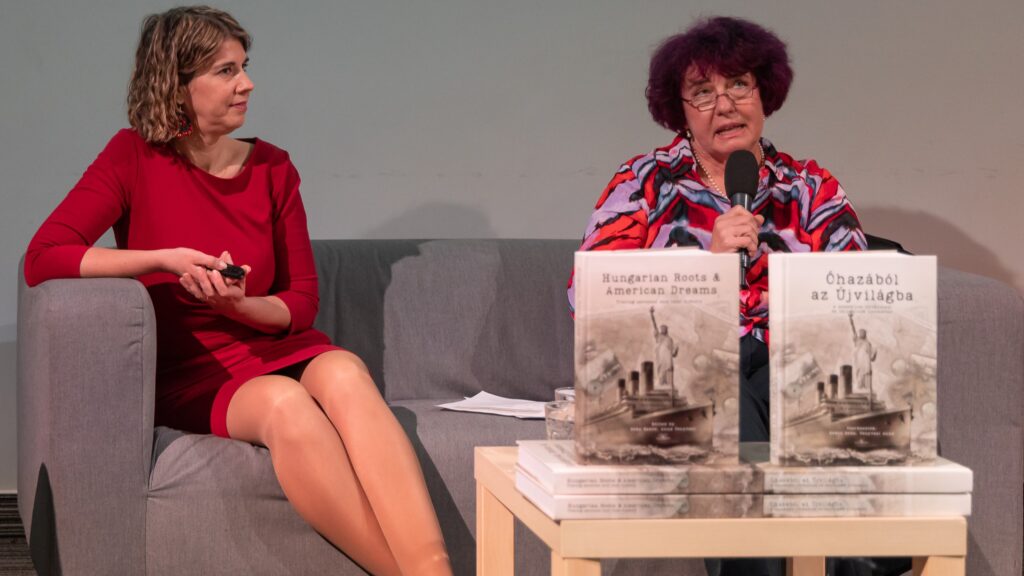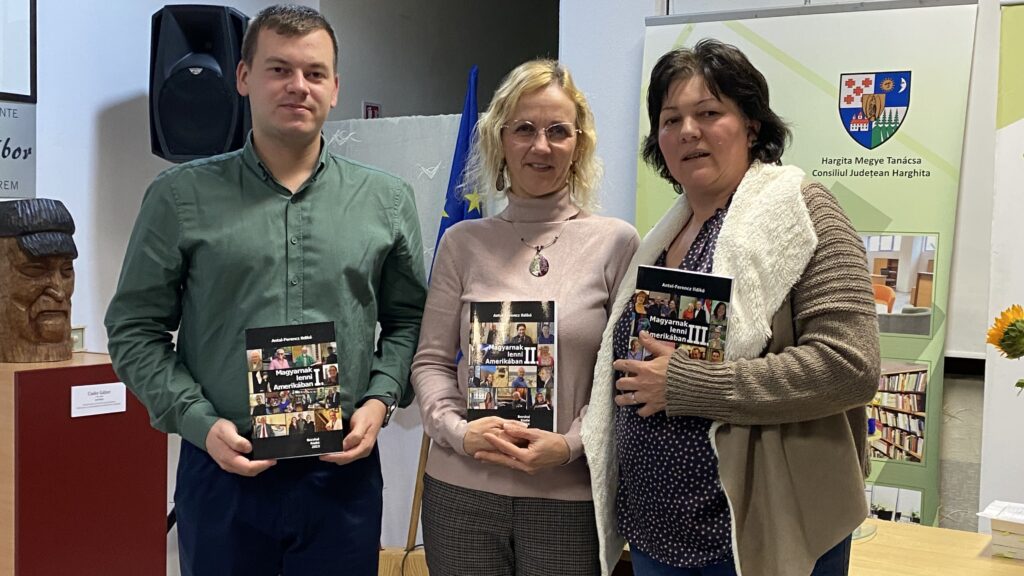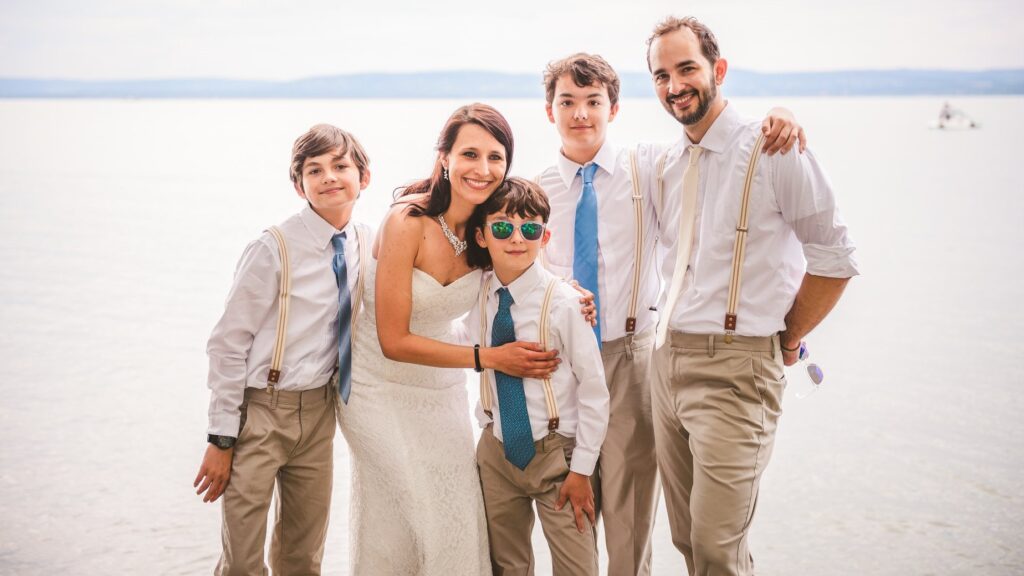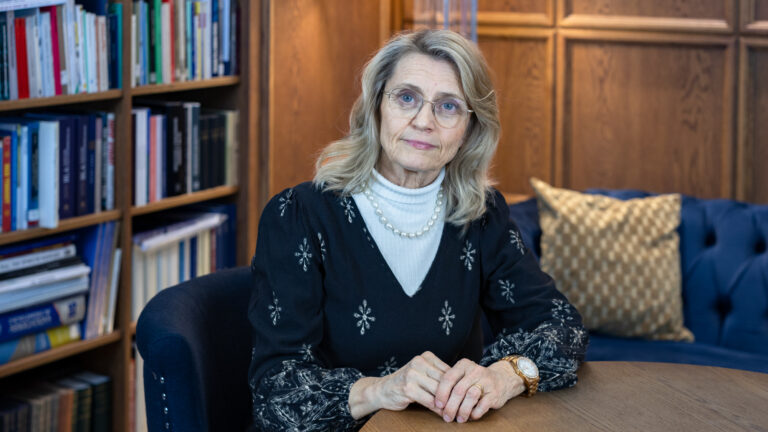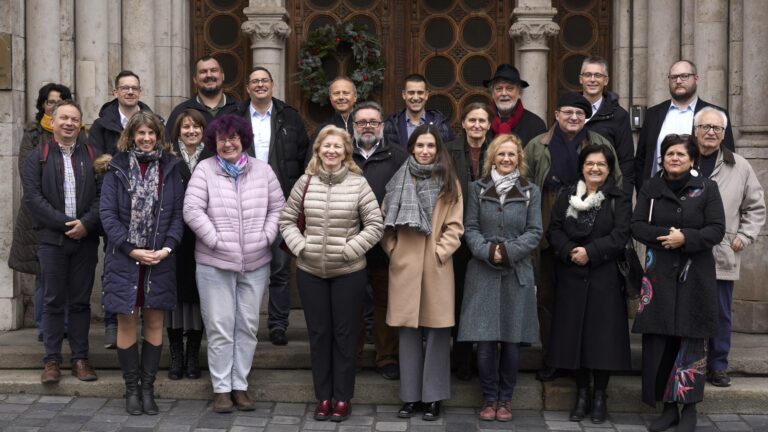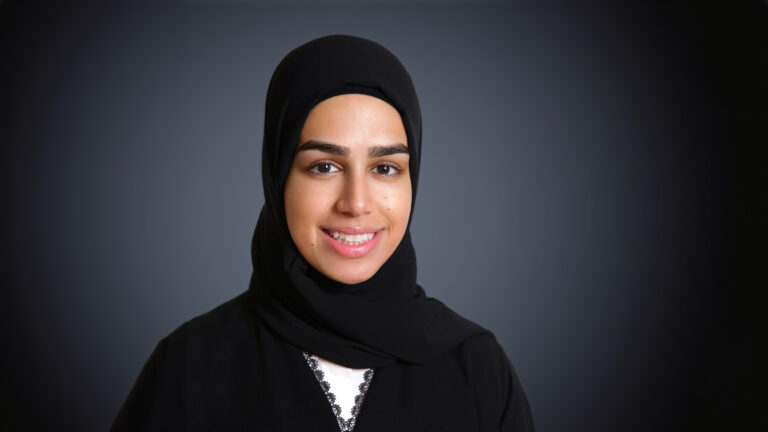Ágnes and István, together with their little son, Pityke, spent two years as Kőrösi Csoma Sándor Programme (KCSP) scholars in Los Angeles. I met them at a fundraising gala of the Reményik Sándor Christian Hungarian School, where they were happily working in the kitchen and serving food, while their son was playing with local children. Pastor and school director Zsolt Jakabffy spoke so enthusiastically about them that I became interested in interviewing them. It turned out to be a beautiful conversation full of emotions.
***
What did you do before pursuing the KCSP scholarship?
István: Since the age of 19, I’ve been working as a folk dance teacher in Debrecen and its vicinity, most recently as artistic director of the Debrecen Folk Ensemble. I’ve frequently visited the Szilágyság region (Romania) to teach folk dance to ethnic Hungarian children, and traveled to Beregszász (Ukraine) several times as a mentor of the House of Traditions in Budapest.
Ágnes: I joined the Debrecen Folk Ensemble 10 years ago. First, I fell in love with folk dance, then with Pisti… While having a big belly, I helped with the lighting during performances and led the children dance group. While at home with our son, Pityke, I earned my degree in pre-school education and even applied to work at a nursery school, but in the meantime the KCSP scholarship was announced, and we wanted to try ourselves out in this respect. We’d missed out on a university scholarship abroad, and the KCSP seemed a good opportunity to make up for it.
Usually students apply for this scholarship, sometimes couples, but families are rare applicants. What experience have you had in this respect?
István: The organizers indicated that it wouldn’t be easy, especially in a big city like Los Angeles, but we managed to make it work. The Hungarian community welcomed us with open arms, and they paid much more attention to us due to our little child, who was also surrounded by a lot of love during these two years. Obviously, it was difficult for him at the beginning, he had to adjust to the new place and people who spoke mainly English, but he got used to it quite easily. The most important factor for a child is to have parents besides him. Pityke had that.
Ágnes: There was a whole community around him. Towards the end of our second year, several people said that the Hungarian community gets more from a KCSP family, because those local children who play with the guest child are constantly forced to speak Hungarian and thus their vocabulary develops a lot, so our son’s presence was motivating and very useful for the Hungarian community.
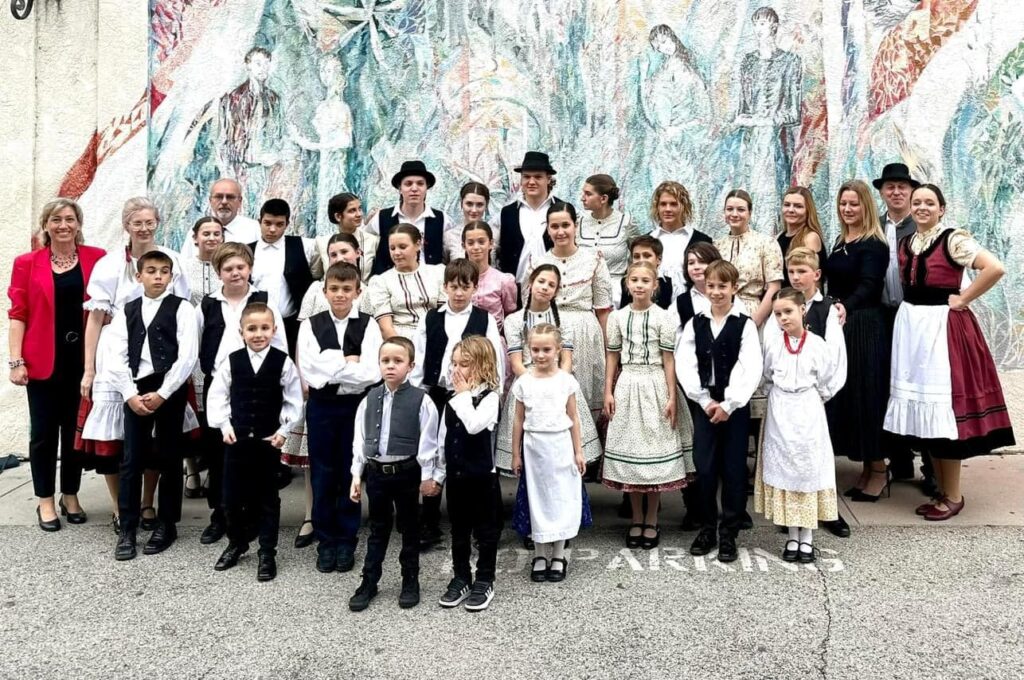
Why did you choose Los Angeles and who welcomed you there?
István: Two of our friends had spent two years in Los Angeles as a KCSP scholar, and they recommended applying there. We contacted the local mentors who encouraged us that we could manage our tasks without our child holding us back. Upon arrival, we saw the palm trees, the six-lane highway… The sizes were overwhelming; it took us some time to accommodate. Due also to the jetlag, it was all very dreamy at first.
Ágnes: Scoutmaster László Latkóczy and Hungarian school teacher Ági Taylor were waiting for us at the airport upon arrival, but before that we had already met them and others online. Ági took us to a Hungarian couple living in a nice big house in a good neighborhood, from whom we could rent two rooms. Pastor Zsolt Jakabffy brought a car for us that we could start using. We arrived on a Friday. The scouts were camping during that weekend when we arrived and invited us to join them. We didn’t really know what to expect, but we wanted to meet them as soon as possible, so we said yes. They were very welcoming and fed us straight away. So, the famous Hungarian hospitality works the same way in Los Angeles.
István: Then came the first day of the Hungarian school on Sunday. It was immediately obvious that they were used to different methods than ours. For us it was a novelty that we had to deal with children who didn’t speak Hungarian so well, thus we had to pay attention to expressions, phrasing and speed of speech. We also had to face the fact that on Sunday morning, not all children are smiling genuinely, after getting up early and traveling up to an hour and a half to school… We had to get them out of that mood. Thus, the beginning was not so smooth…
Ágnes: …but it was a great experience later to see how they opened up more and more to us. The real breakthrough was the Christmas show, for which we were excitedly preparing together: I helped them get dressed, Pisti herded them towards the stage. Once we had our first success together, it was much easier to work with them, the rehearsals were much more relaxed. The first shared experience of success was a good feedback both for us and the children: our methods may be unusual, but bring results. The second year was much easier, we already knew everyone and the tasks and how we could achieve them. It’s still difficult to talk about this, though, because we became a small community of love, where our souls met… It was extremely difficult to leave, we still miss them very much…
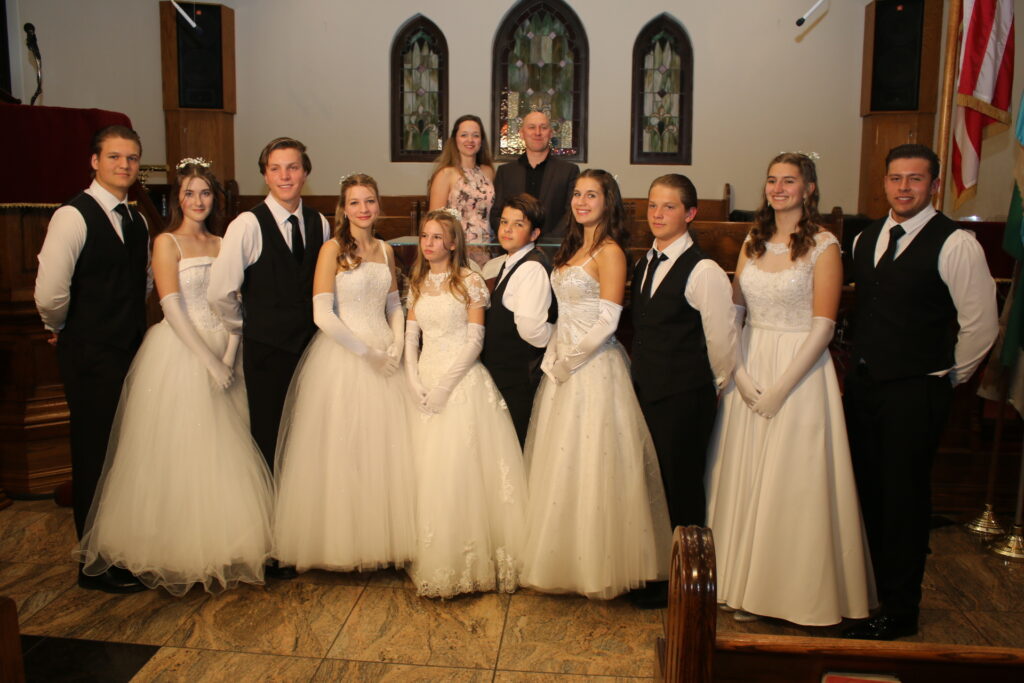
In how many places were you needed and for what tasks?
Ágnes: In the first year, we had four host organizations: three scout troops on two locations, the Hungarian Weekend School and the Carpathians Dance Ensemble. Folk dance teaching was our primary task everywhere, plus I was teaching folk songs. In the school and at the scouts, folk dancing can’t be handled in-house, because they no longer have a permanent folk dance teacher; they need to rely on the KCSP scholars every year. The Carpathians have a leader who leads rehearsals, but he relies on the KCSP scholars for step-by-step training of new choreographies.
Let’s take it one by one. Teaching folk dance for scouts is not always easy…
István: Folk dance is integrated in their curriculum. The scouts used to have a female instructor, but they are mostly boys… When a man appears and taps his feet, the boys realize that they can show their strength and masculinity in that dance. However, the first rehearsal with them wasn’t easy for me. We did some routine preparation, but it wasn’t until we got there that we realized that there were all boys, of mixed ages and very mixed skills. It was the time of reopening after the Covid pandemic, so pretty much nobody knew what to expect. But as soon as we knew who to work with and what to expect, we could choose the material we suspected would be appropriate for them. The biggest challenge was to make sure that, even though we were only working with them for ten to twenty minutes every two weeks, they were still able to perform and had a sense of achievement.
Ágnes: In the second year it worked differently, they developed much more and put a great dance production on stage. It was great to experience the preparation and the show itself together. Everyone’s faces lit up when they stepped off the stage; even those kids were enthused over the show who weren’t always enthusiastic at the rehearsals. They were grateful to us because they received powerful feedback: the audience loudly applauded them. They felt after a while that it was going to be good, but how good it was they experienced only then.
István: There are four–five older boys with whom we talked about the possibility of integrating them into the Carpathians in two or three years. It is very important that the Hungarian organizations cooperate with each other, so that the school and the scout groups provide supplies for the dance ensemble, which should return to perform at their events. That’s what the KCSP scholar is also very good for: he/she can act as a bridge between the Hungarian organizations. As a practical way of doing this, for example, we used our seven-seater vehicle to drive the dancers from the Hungarian school to the Carpathians’ rehearsal and back. We very much hope that the next scholars will continue building a straight intake channel from the weekend Hungarian school and the scout groups to the Dance Ensemble.
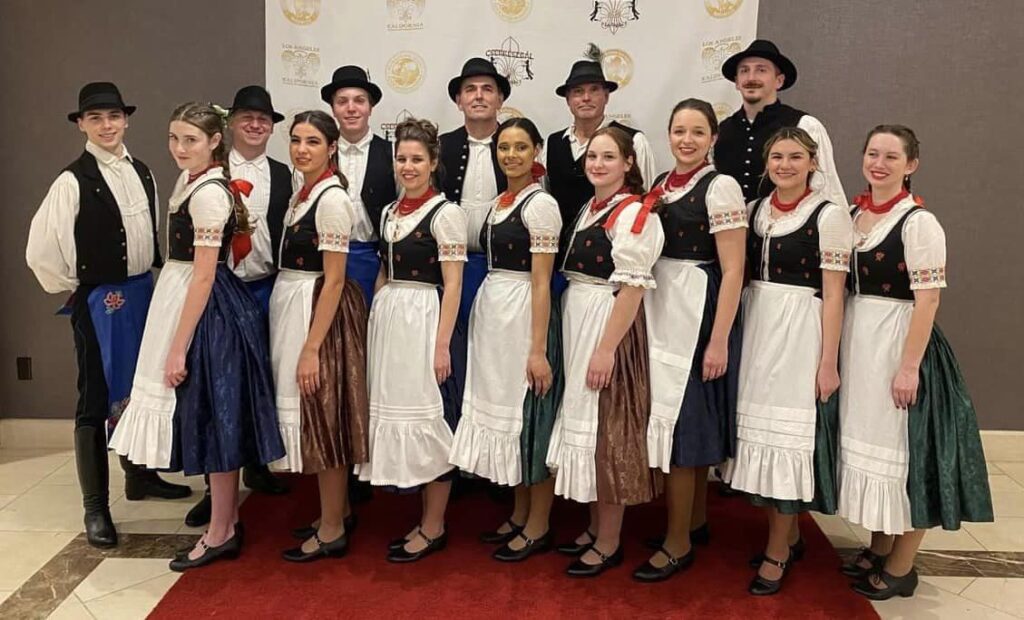
What were your specific tasks with the Carpathians?
István: Leading rehearsals, creating and teaching new choreography, and keeping the old ones up-to-date. This wasn’t easy either, because before the Covid pandemic it was a very strong dance group with many active dancers who often had lead roles at other local Hungarian organizations, but by the time we arrived, some of them had left to study in Hungary, while others started working and never returned. We couldn’t work with the numbers they had had before the pandemic. We had only four couples at regular rehearsals, but we managed to put on stage seven or eight couples for the performances. By the second year we had developed some new routines: I taught the Hungarian school children aged 14–17 the same dance as for the Carpathians so that we could bring them together, with the intention of giving the Hungarian school children an impulse to want to join the Dance Ensemble permanently and motivate those who had already joined to stay there for the long term.
Ágnes: Unfortunately, the Covid pandemic devastated every community activity, and it wasn’t easy to restart. However, in a few years Carpathians can be a thriving and stable folk dance ensemble again. We are proud that we were able to organize folk dance workshops (táncház) on a monthly basis in St. Stephen’s Church. We were told that it had been 25 years since the last one. Even a folk band of local youth, the Kürtöskalács (Chimney Cake) band, grew out of these folk dance workshops. We very much hope that both the dance workshops and the band will survive.
What were you doing at the Hungarian school?
István: Folk dance is built into the Hungarian school and they wanted us to have shows for Christmas and Mother’s Day; that’s why they always ask for folk dancer KCSP scholars. Ágnes worked with the kindergarteners, I taught the school age group. We had two other tasks: editing the school weekly newspaper and organizing the school library, which we were happy to take on because I like writing and Ágnes likes organizing. These were very tailor-made tasks, known in advance, but we undertook a lot of ad hoc tasks and errands as well. We were notified in advance to be prepared for a lot of out of scope work, such as preparing venues for events (packing chairs), cooking or baking for a community dinner. This is totally understandable: we must be able to do whatever the community needs.
Ágnes: At the scout dinner, I was in the kitchen all day long, baking cakes and helping with the preparations. It didn’t make me feel bad at all, because I could see there was a great need for all that I was doing. Every hand, every person’s effort is very important at these events. It’s also the best time to build relationships.
‘Every hand, every person’s effort is very important at these events’
István: The Hungarian school is held in the Reformed Church’s building, so we were slowly becoming members of the congregation, too. I think one of the most wonderful extra tasks was offered to us when the pastor had to leave for a trip in Hungary and there was no substitute available, so the presbytery voted for Ági to conduct the worship service. It went so well that she was asked to do it again later. She obviously didn’t write the sermon herself, but could add her own thoughts.
Ágnes: It was definitely not a typical KCSP task… I was baptized only as an adult, before our wedding, so this undertaking, as well as the two years of being so close to the church and being part of the congregation, has greatly strengthened my faith.
You had mentors from each organization, but the key player seems to be the pastor, also school principal. How did you find working with him?
István: He treated us as family members. He had a lot of gestures that made our stay easier. For example, the first year he invited us to his family for Christmas so that we wouldn’t feel alone during the holiday.
Ágnes: It was very touching to have someone let you into their family, only after knowing each other for two–three months. We didn’t expect that level of openness at all. Christmas was a breakthrough with him, too. At the end of our first year, we moved to the church and lived there throughout the second year, and thus our relationship with him, his family and the church congregation became even closer.
István: I hope we were able to give as much as we received. He was easy to work with, because he accepted our professionalism and never questioned our methods. And he always communicated his expectations openly and clearly.
Ágnes: There was one occasion, two days before a Sunday service, when he came up with the idea that there was a very beautiful marching-in song that used to be sung by the choir, but there was no choir any more… I was so honored that I said yes, learned it, performed it and taught it to the children of the school the following year. But let alone this example, he always told us what to do in time. And if we disagreed about something, we could compromise or reconcile very easily.
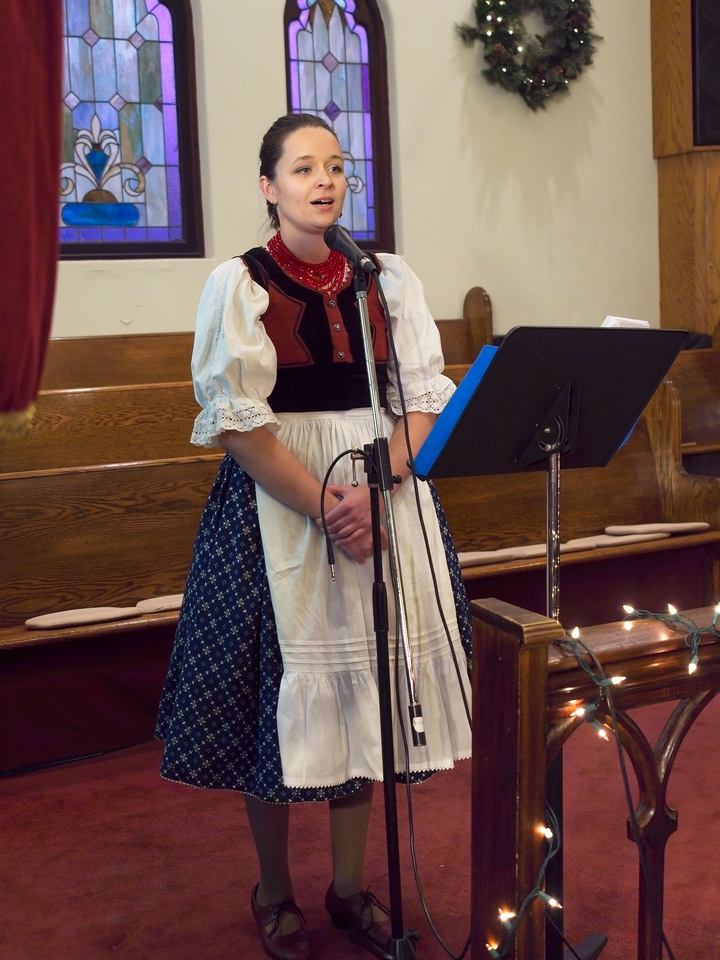
István: We had a very good relationship with our other mentors from the other organizations, too. We didn’t meet them daily, but we liked them and hope they also keep us in their good memories. With the pastor we developed a very deep friendship. When he invited us over to their house for Christmas, we participated in their family play called What God Wants for Christmas. It’s a story in verse in English. At year end, we translated it into Hungarian as a farewell gift to them. When we returned, he asked us to perform it at the church as well.
Ágnes: The depth of our relationship can be also illustrated by the fact that when we found out that he was going to hold a service in Transylvania at his former place of worship, we traveled there in secret to listen to him. When he saw us from the pulpit… That sight alone made the trip worthwhile… We’ve been listening to his Sunday service online ever since. The services as well as the community there have become part of our lives.
One of your additional commitments was the Faith and Hungaricum camp.
István: We’ve participated in and organized quite a few summer folk dance camps in Hungary, and received only positive feedback about them over the years. A few years ago, I started to organize camps on Hungaricums to have a much broader way of introducing children to their Hungarian identity. When we came up with the idea, the pastor told us that there used to be a summer camp in the past about faith. We figured that we could combine the two themes and organize a Faith and Hungaricum camp. During the two years, we were strengthened the most in our faith and in our Hungarian identity, so with this camp we concluded our work there in a worthy way. In Los Angeles, we worked with children, but the weekly meetings can’t have the depth of a multi-day sleepaway camp. There we were able to talk a lot with them in Hungarian, they improved a lot in terms of language skills, learned a lot about their Hungarian heritage, including even Hungarian household brands such as Pick salami and Szentkirályi water. One of the benefits for instance was that a girl who participated convinced her parents afterwards that when they travel to Hungary, they’ll visit the Karcag sheep cooking festival, which probably wouldn’t have been a target location for them if she hadn’t joined the camp.
‘During the two years, we were strengthened the most in our faith and in our Hungarian identity’
Ágnes: We are very grateful for the funding received from the Hungaricum Committee of the Ministry of Agriculture. There were about 15 participants. We really hope that in the future even more Hungarian children can enjoy this camp.
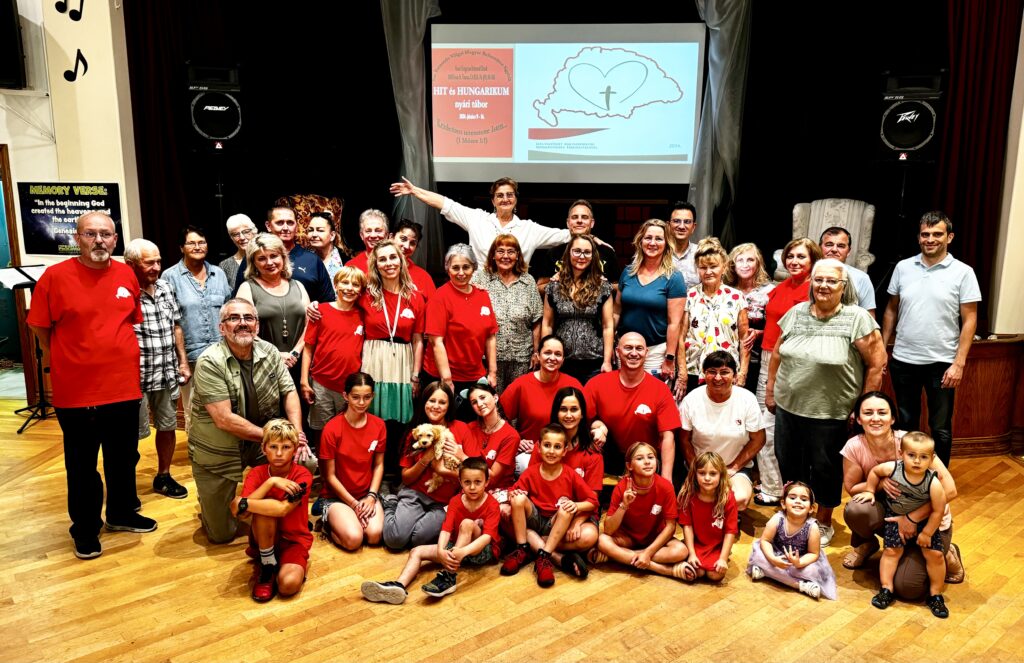
You have also kept in touch with other KCSP scholars.
István: The KCSP organizers gave us a lot of information in our introductory training in Budapest, but the most practical tips can be shared by a former KCSP scholar. After the training, a former KCSP scholar, who is now a community diplomat, László Aradvári, told us in an informal way some important practical information as an experienced traveler to the U.S. Inspired by his example, when preparing for our second year, we gathered the U.S.-bound KCSP scholars together and shared with them multiple aspects of our experience with the program.
Ágnes: Lot of practical issues came up during our stay that couldn’t be solved from Hungary; we had to solve them ourselves. It’s very good to have a network of KCSP contacts to exchange questions, concerns and experience. Therefore, István set up a Facebook group for this purpose, and we had regular online meetings. When there was an administrative issue that affected more scholars, it was convenient that people didn’t have to search for the information on their own.
Please share one or two examples of your most important personal experiences.
Ágnes: Not only my faith, but my independence, flexibility and problem-solving skills have improved a lot. We had to manage nine months twice without having a nanny or a grandparent nearby. It really strengthened us as a couple and as a family that we did everything shoulder-to-shoulder. I would also highlight the solution-oriented approach, the positive outlook about life, the general good mood and kindness as characteristics of average Americans, which would be nice to bring home and spread here. It’s worth being nice to each other, smiling and wishing a nice day in the store when we say goodbye. These may seem like small things, but I consider them very important, because it adds a lot to our mood.
István: We’ve seen the sacrifices that some Hungarian American families make to maintain, develop and nurture Hungarian language and culture, for themselves and especially for their children. These families leave their homes at 7 am on Sunday mornings, so that their children can be at the Hungarian school by 9 am, some teenage dancers travel two hours to the rehearsal and two hours back home… This wouldn’t work in Hungary, but it works in the U.S., where the distances and travel times are enormous. Of course, many people won’t undertake it, but there are exemplary families who do, and others can draw strength from their examples. Here’s another aspect from my own experience: no KCSP scholar should be surprised if they struggle with some depression after returning home to Hungary. You arrive as a new person to your old place, and you want to show how much you’ve changed, but it’s not certain that the people around you will understand or appreciate it, because they haven’t experienced the same as you. It takes a few weeks to adapt and recover mentally, so it’s worth preparing also for this in advance. I’ll tell you what helps me when I feel moody. I have a memory that I escape to: the musical blessing at the end of the church services, which usually made Ági cry and sometimes me, too: ‘May the Lord bless you and take care of you always…’ When I’m in a bad mood, I start singing this song, remembering the community, the people, the place and the song itself, which gives me strength.
Read more Diaspora interviews:

